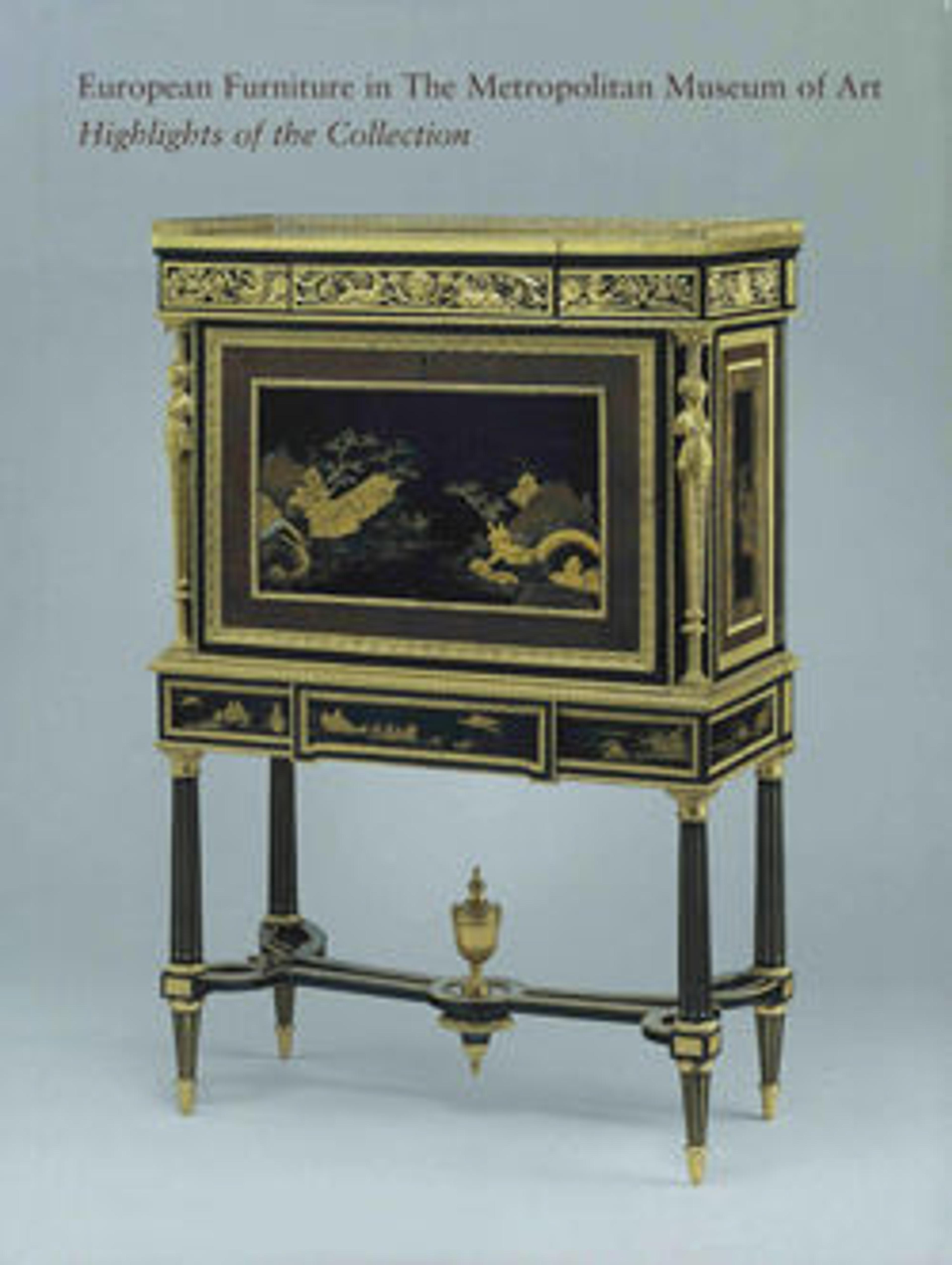Fire screen (Écran) (part of a set)
Many pieces of furniture were commissioned from Jean-Baptiste-Claude Sene (1748-1803), a member of an important dynasty of Parisian chair makers who received a royal appointment in 1784. Sene provided a set of seat furniture for the queen's dressing room, called her cabinet particulier ox cabinet de toilette that is described in the 1789 inventory of Saint Cloud. The daybed, the bergère (a comfortable chair upholstered between the arms and the seat), and the fire screen from the set are now in the Museum's collections. They were the gift of Ann Payne Blumenthal, the second wife of George Blumenthal. The painted and gilt frame of the low daybed is embellished with floral motifs. Six short tapering and fluted legs surmounted by Ionic capitals support the piece. The front stiles of the head- and footboard, which are of equal height, are carved with female half-figures wearing Egyptian headdresses. The bergre, which has a medallion with Marie Antoinette's initials on its top rail is decorated in a similar manner. A decade before Napoleon's North African campaign was to inspire the fashion known as égyptomanie, the queen appears to have had a taste for ornament derived from ancient Egyptian art. Seated classical female figures, rather than Egyptian caryatids, decorate the feet of the fire screen, and a woman who once held a cornucopia reclines on its top. The carver is not known, but Louis-François Chatard (ca. 1749-1819) was responsible for painting and gilding the frames.
According to the 1789 inventory the set was originally upholstered in a white-twilled cotton with rows of individual flowers embroidered by the queen herself. When the three pieces came to the Museum in 1941 only the fire screen's show cover had survived. Although the cotton ground is much discolored, Marie Antoinette's interlaced initials, composed of blossoms embroidered in satin stitch, are in remark
ably good condition.
Artwork Details
- Title: Fire screen (Écran) (part of a set)
- Maker: Jean-Baptiste-Claude Sené (1748–1803)
- Maker: painted and gilded by Louis-François Chatard (ca. 1749–1819)
- Date: 1788
- Culture: French, Paris
- Medium: Carved, painted and gilded walnut; modern cotton twill with silk embroidery
- Dimensions: H. 44-1/4 x W. 27-3/4 x D. (base) 17 in. (112.4 x 70.5 x 43.2 cm.)
- Classification: Woodwork-Furniture
- Credit Line: Gift of Ann Payne Blumenthal, 1941
- Object Number: 41.205.3a, b
- Curatorial Department: European Sculpture and Decorative Arts
Audio
2286. Fire Screen (part of a set), Part 1
NARRATOR: A favorite pastime of Marie-Antoinette was embroidery. And a detailed inventory states that the original upholstery for this firescreen was embroidered in colored silk by the Queen herself. A delicate floral border surrounds her initials, “MA.” The firescreen is part a suite of furniture ordered for the Queen’s dressing room at her summer residence, the château de Saint Cloud. Caroline Weber.
CAROLINE WEBER: For all of their pomp and circumstance, days at Versailles for royals were filled with boredom. Marie Antoinette was obliged to sit for hours on end in audiences with diplomats, foreign visitors, local dignitaries. And for that reason, she had to have something to keep her busy, and she loved doing embroidery.
NARRATOR: Marie Antoinette kept embroidering, even when she was imprisoned during the French Revolution. To hear more, press play.
Listen to more about this artwork
More Artwork
Research Resources
The Met provides unparalleled resources for research and welcomes an international community of students and scholars. The Met's Open Access API is where creators and researchers can connect to the The Met collection. Open Access data and public domain images are available for unrestricted commercial and noncommercial use without permission or fee.
To request images under copyright and other restrictions, please use this Image Request form.
Feedback
We continue to research and examine historical and cultural context for objects in The Met collection. If you have comments or questions about this object record, please contact us using the form below. The Museum looks forward to receiving your comments.
